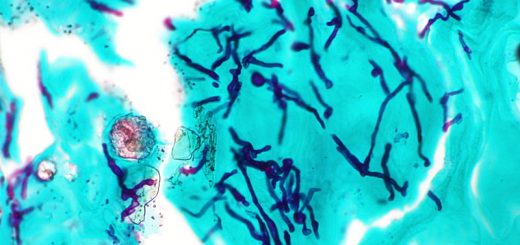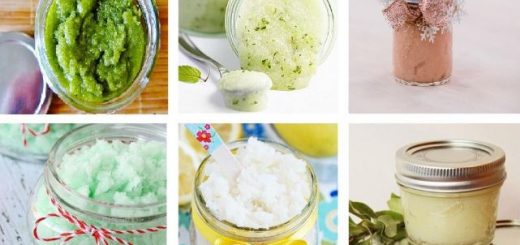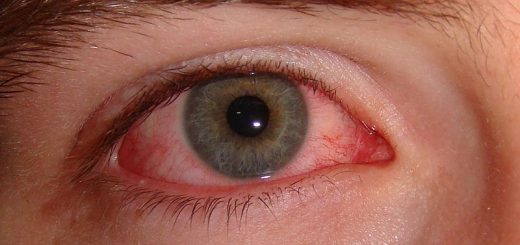39 Home Remedies for Atopic Dermatitis
Atopic dermatitis is a skin disease that causes chronic inflammation with complex etiology. The name is said to originate from “atopy,” a hereditary condition that predisposes a person to multiple allergic disorders, including asthma, food allergies, and hay fever. If you or any member of your family has an allergy, you may be at increased risk of developing atopic dermatitis.
It is important to note that although atopic dermatitis is associated with allergic disorders, it is not specifically related to an allergic reaction. It is more of an inveterate and intense itchy inflammation of the outer layer of skin. Although the cause is unknown, it is often related to an excessively sensitive or malfunctioning immune system, and it can be worsened by factors such as temperature changes, skin infections, irritation from clothes or chemicals, and emotional stress.
Atopic dermatitis often begins in infancy at the ages of 2 to 6 months, and the majority of cases resolved by adulthood. About 30% of children with atopic dermatitis will develop asthma and allergic rhinitis (including hay fever). However, up to 70% of children who develop AD between 6 months to 5 years of age, have spontaneous remission before adolescence. Interestingly, the condition can first occur in adulthood or even continue into adulthood after developing in childhood.
Symptoms
An extremely itchy skin rash is the primary symptom of atopic dermatitis. However, itchiness may precede the appearance of the rash. The skin gets dry, causing an itchy rash, and infants may be restless and rub against the sheets, or scratch if able. The rash may start on the face, or cover a large part of the body.
In early childhood, the rash usually appears on the legs, feet, hands, and arms. Older children and adults tend to have the rash in fewer and more limited areas, such as around the mouth, on the back of the hands, feet, on the neck, face, and in skin folds, particularly in the crook of the elbow and the back of the knee. The dry, itchy skin may appear thickened, leathery and sometimes darker as the rash develops. Continuous scratching may worsen the rash and thicken the skin.
At first, the rash may become dry and flaky, but the itching often stimulates scratching. This scratching may exacerbate the skin, upsurge itching. It may further cause blistering and crusting or cracking and secondary infection; some areas of skin may later turn scaly and leathery.
Home Remedies for Atopic Dermatitis
-
Rinse Clothing
Don’t forget to rinse twice. You may be using a mild laundry detergent; nevertheless, it’s advisable to rinse your clothes not less than twice to ensure the removal of all of the soap.

Run the rinse cycle twice to get your clothes as soap-free as possible
-
Loose Clothing
Go for loose, natural-fabric clothing. Choose loose-fitting, open-weave, cotton or cotton-blend clothes. This allows your skin to “breathe” freely and easily.
-
Wash New Clothes
Ensure you wash new clothes before wearing them. This aids in the removal of formaldehyde and other potentially irritating chemicals used to treat fabrics that may damage your skin.
-
Warm Baths
Hydrate your skin with a bath or shower. It is useful to bathe daily. This allows water into the skin. However, bathing ought to be brief (at most ten minutes). Use warm, not hot, water. Do not use a washcloth because it is abrasive.
-
Use Mild Soaps
Soap should be use only where necessary. Select a mild soap, such as Oilatum, Alpha Keri, Dove, or Neutrogena. You can use a non-soap cleanser, such as Aveeno or Emulave; or a liquid cleaner, such as Neutrogena, Moisturel, or Dove.
-
Maintain Proper Room Temperature
Constant temperature changes (hot to cold or vice versa) can irritate the skin. You should maintain constant humidity levels in your home, too. Ensure you keep the temperature and humidity in the home fairly constant. In summer, you should use the air conditioner; while in winter, you should use a humidifier. Keep the humidifier clean to prevent molds from forming.
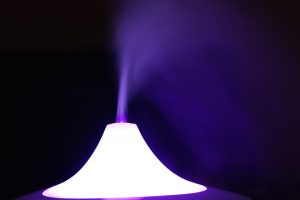
Humidifiers come in all shapes, sizes, and prices ranges
-
Try Lubricants
Use lubricants with the bath or shower to maintain moisture within the skin. You may use Cortisone derived ointments or creams to decrease the itching and control the inflammation. Moisturizers are beneficial to people with atopic dermatitis. They prevent excessive skin dryness. Some moisturizers to use include Eucerin cream, Neutrogena Emulsion, Aquaphor ointment, Lubriderm cream / lotion. You can also try Moisturel cream / lotion, D.M.L. cream or lotion, Eutra, LactiCare lotion, or Vaseline Dermatology lotion. Learn how to make your own natural moisturizers by reading this article.
-
Sunscreens
Get sunscreens, precisely one with SPF of 15 or higher. Sunburn causes skin irritation and may further aggravate the skin condition.
-
Apple Cider Vinegar
An effective treatment for dermatitis is apple cider vinegar (ACV). It efficiently alleviates the itches and rashes. To use, add water to the ACV. Soak a cotton bud in this solution and place on the affected area for about thirty minutes. Afterward, clean the area with a damp cloth. Continue this process daily until you notice differences. You can also add two tablespoons of ACV to a glass of water and consume internally.
-
Shower After Swimming in Chlorinated Water
Ensure you wash your body after swimming. The chlorine and other in some swimming pools that may irritate your sensitive skin. Therefore, immediately you are done swimming, go shower or bath, using a mild soap all over. Always remember to reapply your moisturizer.
-
Coconut Oil
Coconut oil has sufficient moisturizing and antimicrobial properties that work for atopic dermatitis. It can substantially alleviate inflammation, scaling, and dryness within a few days. Rub warm coconut oil on the affected area to soften up the skin. The results are even more amazing when you apply before going to bed.
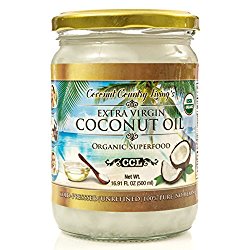
Extra Virgin Coconut Oil ($14.97)
-
Oatmeal
An oatmeal bath is beneficial for skin irritation, rashes, and itches. It will also help keep your skin moisturized. You can mix one cup of finely powdered oatmeal in lukewarm bath water. Soak in this bath water for about twenty minutes daily. Repeat this remedy daily for one month.
-
Aloe Vera
Aloe vera is commonly used to treat inflammatory skin conditions such as atopic dermatitis. It restores the pH balance of your skin as well as relieves the itching and skin irritation. It is also popular for its moisturizing and antimicrobial properties. Use fresh aloe vera gel regularly to get rid of dermatitis. You can drink aloe vera juice to maintain a healthy and radiant skin.
-
Chamomile
Chamomile, when taken in the form of tea has soothing effects on the body. You can also use it as cream, or add a few drops of the oil to your bath water to get substantial relief.
-
Dietary Changes
Check out your diet. Food allergies sometimes play a role in atopic dermatitis, especially in childhood. If you observe that a particular food aggravates your rash, stay away from it for some time. The chances are that the rash will clear up after some time.
If after reintroducing the food, the rash returns, stay away from it entirely. If you feel that your child’s atopic dermatitis is a result of food allergies, consult a child’s paediatrician for an examination.
-
Vitamin E
Vitamin E enhances healing and alleviates itching and inflammation. You can dab the oil on your skin before going to bed. Another way to use to buy lotions and creams with vitamin E as its main ingredient.
Foods high in vitamin E, like sunflower seeds, peanut butter, wheat germ oil, and corn, are recommended for consumption.
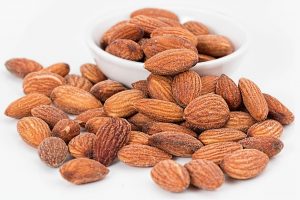
Almonds and many other nuts are rich in vitamin E
-
Neem
You can use Indian lilac or neem leaves to treat atopic dermatitis. This can revive your skin’s health and guard it against several infections. To use, mix a tablespoon each of sesame oil and turmeric powder into a tablespoon of crushed neem leaves. Then add this paste to the affected area of the skin. Let it be for a few hours before you wash it off. Continue this daily for some months. Another way to use it is to add some drops of neem oil to warm bath water. Then soak your body in it for about twenty minutes daily.
-
Honey
Honey has excellent anti-inflammatory effects on the skin. It is also an antibacterial and antiseptic agent. Combine raw honey, beeswax, and olive oil in equal proportion. Heat the blend up to make an ointment. After cooling, rub this blend on your skin and leave it for some hours. Repeat this process daily until you notice significant changes. In the case of radiation-induced dermatitis, rub manuka honey on the affected area, daily.
-
Slippery Elm
This is a very useful herbal treatment for atopic dermatitis. It has high mucilage content moisturizes the skin and promotes healing. To use, you should wash and grind a few slippery elm leaves into a paste. You can then rub it on the affected area of the skin. Let it dry completely before you wash it off. Continue this thrice daily until you feel relief.
-
Body Butter
Using natural body butter after a bath or shower can offer relief to the skin rashes. Rub on the affected area before moisturizing. Once you observe an improvement in your reaction, you can now use this creamless to prevent any flare-ups or further damage to the skin.
-
Avoid Chemicals
Stay away from all severe laundry detergents, chemical cleaners, soaps and shampoos. They can result in further inflammation of the condition and may worsen it.

Instead, use plant-based cleaners to clean your home without needing to worry about chemical side-effects
-
Turmeric
Another good ingredient used in the treatment of dermatitis is turmeric. It has both anti-inflammatory and antiseptic properties. To use, you should heat a quart of water. Then add one-half teaspoon of turmeric powder to the water. Boil the solution. After a while, you should allow it to cool. You can then drink it. This solution can also be used to wash the affected area of the skin.
-
Primrose Oil
Evening primrose oil is beneficial for treating atopic eczema. It has relieving effects on an inflamed skin and can clear out the infection in no time.
-
Use Lactobacillus Sakei Supplement
Children with eczema-dermatitis disorder supplemented with Lactobacillus sakei often display a considerable clinical improvement. Probiotic supplementation tends to alleviate the intestinal barrier function. It also decreases gastrointestinal symptoms.
-
Vitamin B-12
Topical vitamin B-12 is good for kids with atopic dermatitis. This could be taken in the form of supplements or by taking foods rich in vitamin B12: seafood, beef, and whole grains.
-
Breastfeeding
Breastfeeding lowers the risk of getting atopic dermatitis in babies. It strengthens their immune system, allowing their body to fight effectively against infection.

Breastfeeding your baby is one of the healthiest ways to feed them, whether they are sick or not
-
Omega-3 Fatty Acids
Omega-3 fatty acids in breast milk and fish oil help to protect against conditions such as atopic eczema and allergic sensitization in children. If you are not breastfeeding anymore, feed your child fish or seeds, both of which are high in omega-3s.
-
Black Currant Seed
Blackcurrant seed oil is tolerable and transiently reduces the prevalence of atopic dermatitis in newborns. It is mild on their sensitive skins and usually poses no side effect.
-
St. John’s Wort Cream
Topical application of St. John’s wort cream may improve atopic dermatitis. It is essentially anti-inflammatory and is beneficial for restoring the skin’s texture.
-
Borage Oil
Borage oil can also be a useful treatment for atopic dermatitis. It has anti-inflammatory properties that provide soothing relief to the scaly skin.
-
White Rose Petal
White rose petal extract is the anti-allergic and anti-atopic agent that is effective against atopic dermatitis. You can apply topically by rubbing the extract on the affected area for relief.

Make sure to use the extract from this flower; using the petals will do little to nothing
-
Cool Compress
Use cool, wet compresses. Ensure you cover the affected area with bandages and dressings. This protects the skin and prevents scratching.
-
Avoid Scratching
Make sure you cover the itchy area of your skin to prevent scratching. Keep nails trimmed and put on gloves at night. Stay away from substances that tend to cause itchiness like detergents, soaps, some perfumes, dust, grasses, wools, and other scratchy clothing. For example, you may wear cotton underwear or a cotton shirt under the sweater in winter. Avoid fabric softeners such as Snuggles, Bounce, or Cling-free.
-
Manage Stress and Anxiety
Stress and other emotional disorders may lead to deterioration of atopic dermatitis. Therefore, it is important for you to mend your emotional wellbeing. Relaxing nervine herbs can be helpful in supporting the nervous system; these herbs promote a sense of calm. Spend time with nature, practice yoga and take breaks.
- Essential Oils
Essential oils like lavender, rosemary and yarrow oils have reinvigorating effects on the skin. When applied topically, they can help soften up the skin, cause skin cell regeneration and clear up infections. Before application, ensure you dilute with a suitable carrier oil like almond or jojoba oil, to prevent skin irritation.
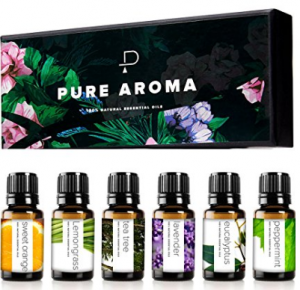
100% PURE AROMA Essential oils 6-pack (Eucalyptus, lavender, lemon grass, orange, peppermint, and tea tree). ($6.95)
-
Sleep
Sleep is the body’s natural way of restoring strength and repairing itself. An average of eight hours of rest is recommended daily to ensure a healthy system.
-
Cucumber
Organic Cucumber has long been used for its restorative effects on the skin. It cools the skin and contributes to alleviating skin irritation. Cut the cucumber in thin slices and place on the affected area for two hours. Juice can also be extracted from cucumber and applied on the skin.
- Jojoba Oil
In cases of painful, pus-filled patches, jojoba oil is an excellent remedy to use. It easily penetrates the skin’s layers for maximum effect. It nourishes, moisturizes, and reinvigorates the skin. Before applying jojoba oil on the skin, make sure you wash your hand properly to prevent contamination.
-
Sweet Almond Oil
Extracted from kernels or nuts, almond oil is a common ingredient in skin and hair care products. It is useful for relieving inflammations, and for moisturizing the skin, in cases of chapped skin. For topically, apply the oil properly on the affected area to promote the healing process.

Almond oil is clear, unlike many other oils
In conclusion, atopic dermatitis can easily be treated using these home remedies. However, if you do not find any of these remedies useful to you, then you should consult a dermatologist immediately.
Resources
www.herbalremediesadvice.org/atopic-dermatitis.html
health.howstuffworks.com/wellness/natural-medicine/home-remedies/home-remedies-for-dermatitis4.html
http://www.medicalnewstoday.com/articles/235092.php
http://www.ncbi.nlm.nih.gov/pubmed/20195063
www.top10homeremedies.com/home-remedies/home-remedies-for-dermatitis.html/3
www.greenmedinfo.com/blog/27-natural-alternatives-eczema-atopic-dermatitis
www.mayoclinic.org/diseases-conditions/eczema/basics/lifestyle-home-remedies/con-20032073
http://www.rchsd.org/documents/2014/02/eczema-handout.pdf
www.myhealthtips.in/2013/12/top-natural-home-remedies-for-eczema.html
http://www.westlakedermatology.com/dermatology-procedures/dermatitis/
http://www.home-remedies-for-you.com/remedy/Eczema.html
https://www.disabled-world.com/artman/publish/eczema-dermatitis.shtml
https://www.healthline.com/nutrition/vitamin-b12-foods
Cover photo by Eisfelder

